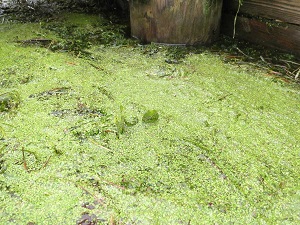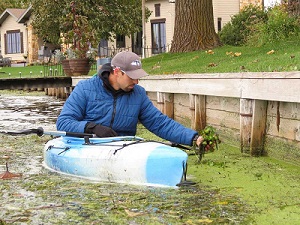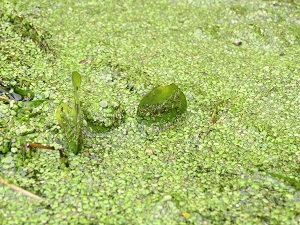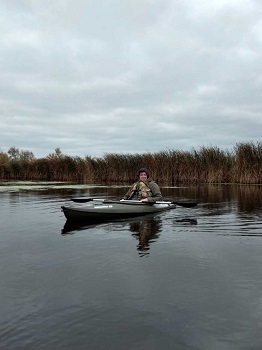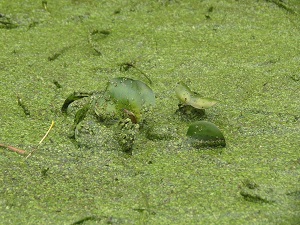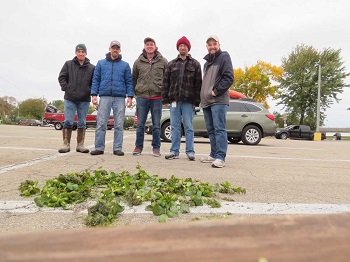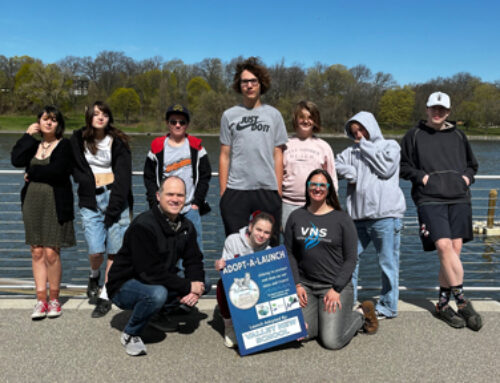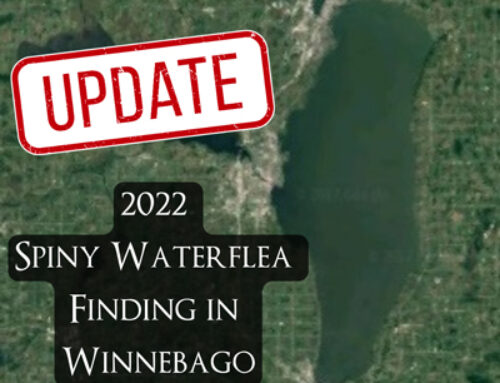Partnerships Key to Stopping Water Hyacinth
On October 12th, a team of people from the Fox Wolf Watershed Alliance (FWWA), UW-Stevens Point, UW-Oshkosh, WI Department of Natural Resources (DNR), and citizen volunteers found a population of the invasive aquatic plant, water hyacinth, near Lake Winneconne Park. This is the fourth consecutive year that water hyacinth has been found in this same location in Lake Winneconne.

The species was a popular ornamental plant in water gardens and ponds before being listed as a Prohibited species under Wisconsin Code NR40. Under NR40, prohibited species such as water hyacinth cannot be transported, possessed, transferred, or introduced without a permit issued by DNR.
Water hyacinth plants have continued to be found in Lake Winneconne every year since a citizen volunteer first reported it to DNR in October 2015. With local partners, the DNR coordinated efforts in October and early November 2015 to remove all water hyacinth plants that were found. As a sub-tropical plant originally native to South America, there was hope that the cold Wisconsin winter would eliminate any plants that were potentially missed by the removal efforts. However, in September 2016, more water hyacinth plants were located in the same area of Lake Winneconne and the Wolf River channel. Additional monitoring and removal occurred in September and October 2016, September and October 2017, and July and October 2018.
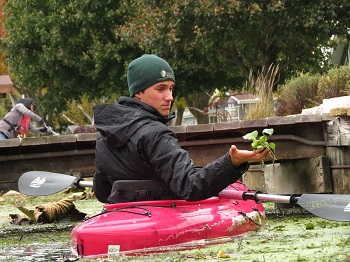
While current scientific information suggests that it is unlikely that water hyacinth plants can over-winter in Wisconsin, there is still a potential risk of fragments and/or seeds surviving and germinating the next year. If the plant is not coming back on its own, it is believed that the plant is being repetitively illegally released into the lake near the end of the growing season (September-October). Releasing any non-native plant into any public waters of the state is a violation of Wisconsin law. In addition, the ecology of the Winnebago Waterways is put at risk when this plant is introduced. Even within a single growing season, water hyacinth reproduces very quickly (doubling in as little as 6 days) and forms large, dense mats that can interfere with boating, swimming, and other waterway uses. These mats can reduce the dissolved oxygen in the water which affects underwater animals such as fish. Since the mats can grow extremely large, very little sunlight can reach the bottom of the waterbody, leading to a reduction of beneficial native plant growth. In addition to Lake Winneconne, water hyacinth has previously been found in other waterbodies across eight Wisconsin counties, including recent observations in several Pools of the Mississippi River.
The team of FWWA staff, partners, and citizen volunteers are actively reducing the risk of water hyacinth in Lake Winneconne. It’s important to remember, never release any plants or animals into our lakes and rivers.
If you are interested in becoming a citizen volunteer to help with similar projects, contact Chris Acy, Winnebago Waterways AIS Coordinator, at chris@fwwa.org or (920)460-3674. For more information about similar aquatic invasive species monitoring projects, visit http://WinnebagoWaterways.org.
Winnebago Waterways is a Fox-Wolf Watershed Alliance program. The Fox-Wolf Watershed Alliance is an independent nonprofit organization that identifies and advocates effective policies and actions that protect, restore, and sustain water resources in the Fox-Wolf River Basin.
To learn more about water hyacinth and its impact to Wisconsin’s waters and economy, visit http://dnr.wi.gov/topic/Invasives/. Help protect your Wisconsin Lakes! If you think you have found a population of water hyacinth (or other unreported aquatic invasive species), contact Chris Acy at the contact information listed above.
This article was written by Chris Acy, the AIS Coordinator for the Winnebago Waterways Program covering Fond du Lac, Calumet, and Winnebago Counties.


